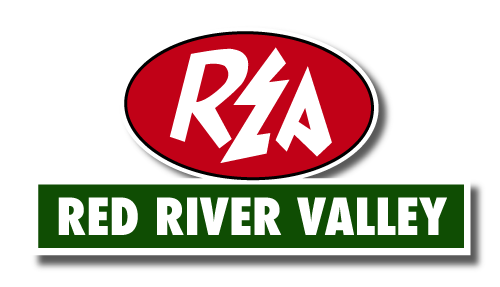Co-op lines: single or double?
by Tom Tate
Living on Red River Valley’s lines is a literal expression, meaning you have a system of poles and wires connecting your home or business to the co-op so you can get power when and where you need it. While these systems of poles and wires all look quite similar, there are distinct differences. Let’s take a look at those differences and why they are important.
Caution: Utility terms ahead!
Everything starts at the substation when it comes to co-op distribution systems. Transmission lines feed high voltage into the substation, where it is reduced to a more manageable and safer level. On the other side of these transformers, distribution feeder lines carry the power out and into the service area, where they “feed” power to a sizable block of co-op members. This is an efficient way to move a large amount of power closer to its point of use. These are also what are termed radial feeds, meaning only one end is connected to a power source.
At certain points along the feeders, lateral lines branch out to connect member loads, which are the amounts of power a home or business needs. Systems are designed to supply the amount of load to which they are connected. If you look at a simple map of REA’s distribution system, it resembles the veins and arteries of the human body. Only in this case, it carries life-enhancing electricity instead of life-sustaining blood. These lateral lines are also radial in many cases. Eventually, the last member is reached and the system goes no further.
Lateral lines are the “single” lines referenced in the title of this article. When co-op distribution systems were first built, the most cost effective solution in a lot of cases was the lateral approach. This was especially true for far-flung, end-of-line members. There is one drawback to a lateral or single line approach, however. When there is a fault (something causing the flow of electricity to stop, like a tree on the lines or a pole being broken by a car) in the system, every member beyond that point loses power until the problem is located and corrected.
Enter the double line approach. A normal evolution in distribution system growth is to replace radial lines with loop connections. The loop is connected to a power source at two ends rather than one. This power source can be another substation or another feeder from the same substation. With this approach, when power is interrupted, we have the opportunity to rapidly restore power to a large portion of the affected members.
Here is how the loop works. Let’s say a tree branch breaks and falls onto the wires. Equipment on the lines senses the fault and operates protective devices immediately in front of the fault, just like circuit breakers do in your own home. No power flows beyond the protective device, and all members beyond this point lose power.
Back at the co-op, the system has alerted operators of the problem or members have started calling about the power outage. “Our crews are sent to the area to find and fix the problem” says Engineering Technician Ky Frazier. “If the line is a single, radial feed, power for everyone is out until the problem is corrected. But, if a loop feed is in place, crews in the field can open switches to isolate the fault and reroute power.” This means faster power restoration for many members. The purpose of the loop feed or double line approach is exactly this, restoring power to members faster than where a single line is in place. Red River Valley REA maintains 2,700 miles of line, bringing power to over 15,000 accounts.
In the event of a power outage, please give us a call at 580-276-3364.

